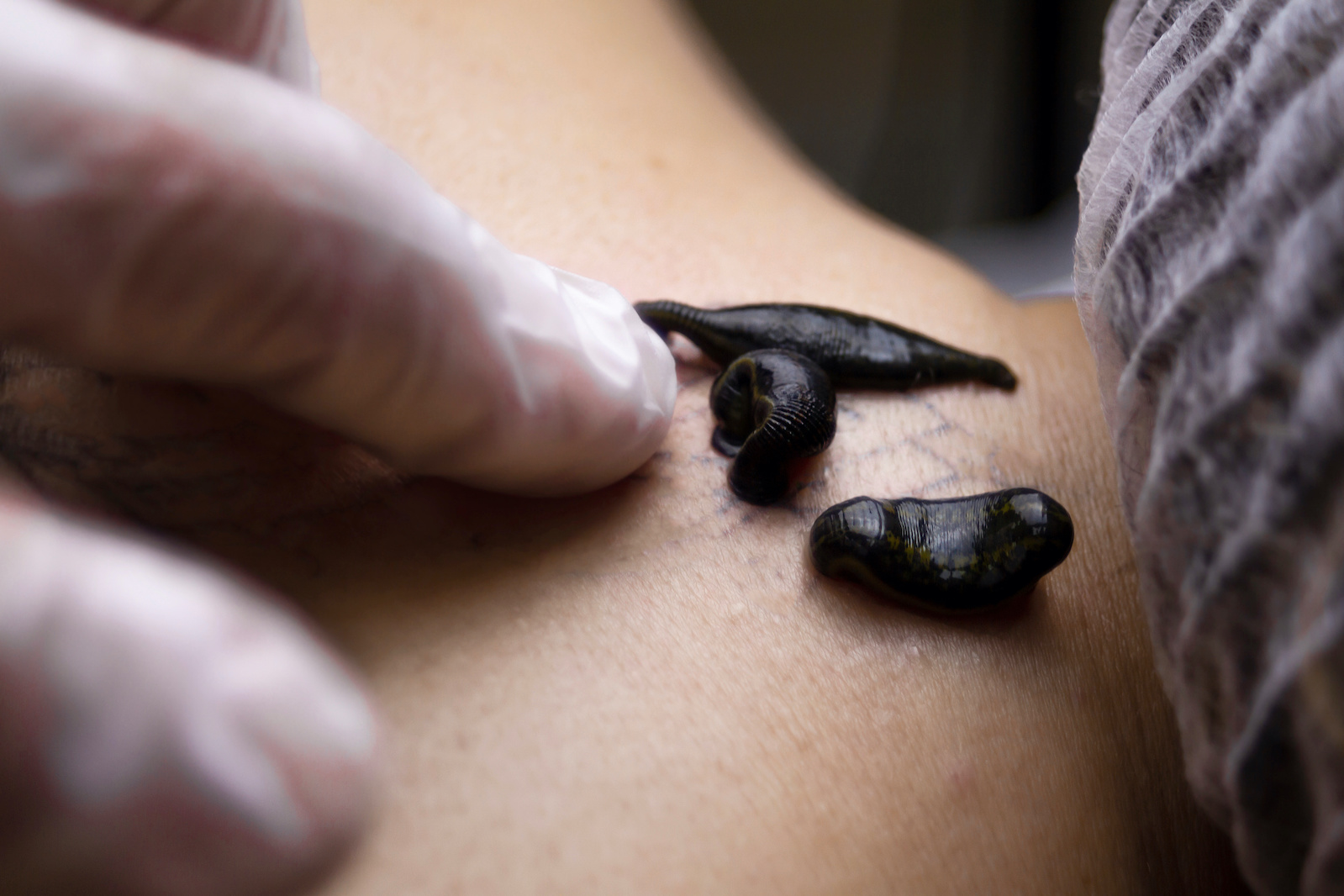Intense lower back pain that pierces sharply, almost paralyzing, and radiates to the leg indicates a sciatica flare-up. Those affected by this condition describe the associated pain as the worst they’ve ever experienced, likening it to the sensation of being electrocuted. Leech therapy is one method of treating sciatica.
Sciatica needs treatment. Given the condition’s recurrent nature, prevention is also essential. Discover how leech application can impact inflamed nerve roots and learn about the characteristic symptoms of sciatica and its most common causes.
What is sciatica?
Commonly referred to as a nerve root attack, sciatica is a set of symptoms resulting from irritation or damage to the sciatic nerve or its roots. It’s worth noting that the sciatic nerve is the largest peripheral nerve in the human body – it runs from the lumbar spine through the buttocks and hips, down the back of the thighs, and to the feet.
The pain associated with sciatica is due to mechanical pressure from a damaged intervertebral disc (disk) on the nerve roots. This pressure is usually caused by degenerative changes in the spine that occur with age.
Symptoms of sciatica
A typical symptom of sciatica is pain in the lower part of the spine that radiates to the buttock, calf, and sometimes even to the foot, depending on which part of the nerve is compressed. It tends to appear suddenly – a single abrupt movement can trigger it. It can be activated by lifting heavy objects or bending or standing up.
Patients describe the pain experienced during a sciatica flare-up in various ways, but the most common descriptions include sharp, tearing, splitting, stabbing, or burning pain. Besides the painful symptoms, additional signs may include:
- numbness or tingling in specific parts of the lower limb;
- difficulty moving the entire leg or just the foot;
- problems standing up and functioning normally.
Causes of sciatica
In most cases, sciatica attacks are caused by compression of the nerve roots in the spinal canal by elements of the intervertebral disc during discopathy or by aspects of the narrowed spinal canal in spinal degenerative disease. It can also be caused by a vertebra displaced about adjacent vertebrae.
Although rare, the cause of sciatica can lie elsewhere. It can be caused by:
- a fracture within the spine;
- a peripheral tumour pressing on the nerve;
- tuberculosis of the spine;
- a tumour in the spinal canal;
- a spine fracture due to osteoporosis;
- the presence of a hematoma pressing on the nerve.
Diagnosis, assessment, and treatment of sciatica
Pain in the spine should never be ignored. Hoping it will disappear over time is futile, as it usually gets stronger after a few days. Therefore, it’s crucial to schedule an appointment with a specialist immediately.
The doctor will conduct an interview and a physical examination to assess muscle strength, sensation, and reflexes. Additionally, they may order tests such as X-ray imaging (X-ray), computed tomography (CT), or magnetic resonance imaging (MRI). Only with a complete picture of the situation can they plan treatment.
Conservative treatment for sciatica largely relies on physiotherapy and rehabilitation. Patients are advised to take pain relief and anti-inflammatory medications. Surgery is the last resort. Another method for treating sciatica is leech therapy.
Effects of leeches in treating sciatica
Leech therapy can be invaluable for medications and rehabilitation in sciatica cases. It’s indicated for spinal pain syndromes that occur periodically, where there is no indication for surgical treatment. In patients suffering from sciatica, leeches are applied in the lumbar area, just above the buttocks, along the nerve line in places where symptoms are most intense. Typically, 6-8 leeches are applied to the skin simultaneously.
The compounds produced by sponges, including their pain-relieving and anti-inflammatory properties, can significantly reduce pain intensity, eliminate swelling, and make it easier for patients to rise, bend, and walk. However, the treatment with leeches should be repeated at least several times for the best results.
The appropriateness of leech therapy (not only for sciatica but in general) should be consulted with a doctor, especially if other diseases are present. If there are no contraindications, undergoing leech therapy is worth considering, as it certainly won’t harm and may bring the desired relief and accelerate recovery.

